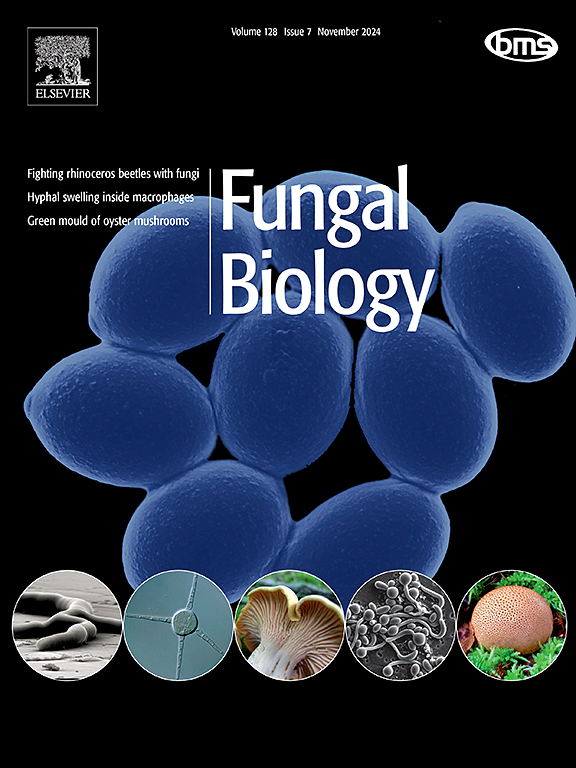暖温带气候区真菌孢子日历。除了枝孢子菌还有什么?
IF 3
3区 生物学
Q2 MYCOLOGY
引用次数: 0
摘要
空气中真菌孢子的定性和定量组成是真菌生物学、环境因素(特别是气候、天气条件、植被、土地覆盖和人类活动)相互作用的结果。由于与确定空气中存在的孢子丰度相关的挑战,很少进行连续的空气菌学监测。在波兰东南部,这种研究只是偶尔进行。因此,本研究的目的是用以前未研究过的孢子分类群的数据更新孢子日历。采用体积法分析了2019-2023年5年间27个孢子分类群的发生情况。在整个季节,一、二级时间成分簇根据其独特的孢子被区分和表征。在季节开始时,双星科和槟榔科的孢子最为突出。在生长季结束时,空气中出现了较高浓度的灰孢、砷孢和肉毒杆菌型孢子。虽然枝孢菌孢子在空气中绝对占主导地位,但细球菌、灵芝、Alternaria、Pezizaceae、Botrytis和Epicoccum孢子应被认为是温带气候区浮游生物的重要组成部分。当前数据与存档记录的比较表明,真菌可能对气温的显著升高表现出不同的反应。本文章由计算机程序翻译,如有差异,请以英文原文为准。
Fungal spore calendar for the warm temperate climate zone. What else besides Cladosporium spores?
The qualitative and quantitative composition of airborne fungal spores results from the interaction of fungal biology, environmental factors, particularly climate, weather conditions, vegetation, land cover and human activity. Continuous aeromycological monitoring is rarely conducted due to the challenges associated with identifying the abundance of spores present in the air. In southeastern Poland such studies have been conducted only occasionally. Therefore, the aim of this research was to update the spore calendar with data on previously unstudied spore taxa. Using the volumetric method, the occurrence of 27 spore taxa was analyzed over a five-year period (2019–2023). Throughout the entire season, first- and second-order temporal compositional clusters were distinguished and characterized based on their distinctive spores. At the beginning of the season, Diatrypaceae and Pezizaceae spores were the most prominent. Airborne Periconia, Arthrinium, and Boletus type spores appeared in higher concentrations toward the end of the growing season. Although Cladosporium spores were definitely dominant in the air, Leptosphaeria type, Ganoderma, Alternaria, Pezizaceae, Botrytis, and Epicoccum spores should be considered a significant component of aeroplankton in the temperate climate zone. A comparison of current data with archived records suggests that fungi may exhibit diverse responses to significant increases in air temperature.
求助全文
通过发布文献求助,成功后即可免费获取论文全文。
去求助
来源期刊

Fungal biology
MYCOLOGY-
CiteScore
5.80
自引率
4.00%
发文量
80
审稿时长
49 days
期刊介绍:
Fungal Biology publishes original contributions in all fields of basic and applied research involving fungi and fungus-like organisms (including oomycetes and slime moulds). Areas of investigation include biodeterioration, biotechnology, cell and developmental biology, ecology, evolution, genetics, geomycology, medical mycology, mutualistic interactions (including lichens and mycorrhizas), physiology, plant pathology, secondary metabolites, and taxonomy and systematics. Submissions on experimental methods are also welcomed. Priority is given to contributions likely to be of interest to a wide international audience.
 求助内容:
求助内容: 应助结果提醒方式:
应助结果提醒方式:


